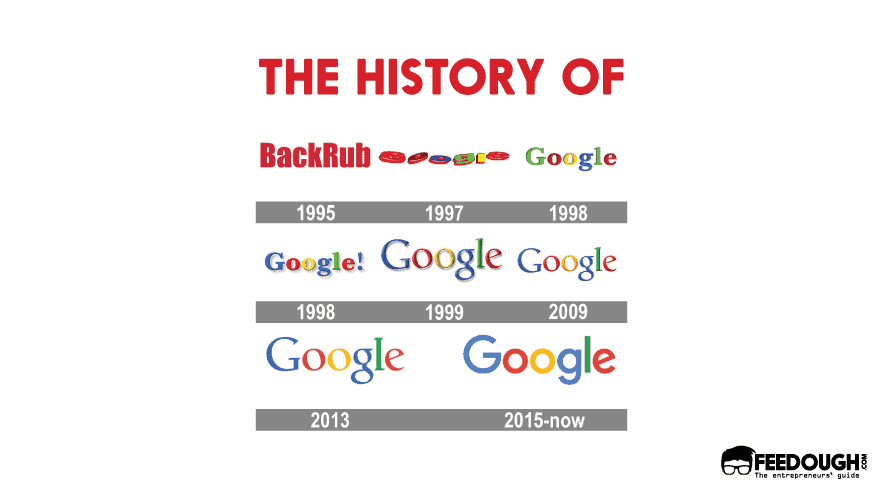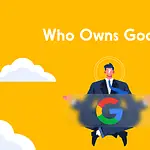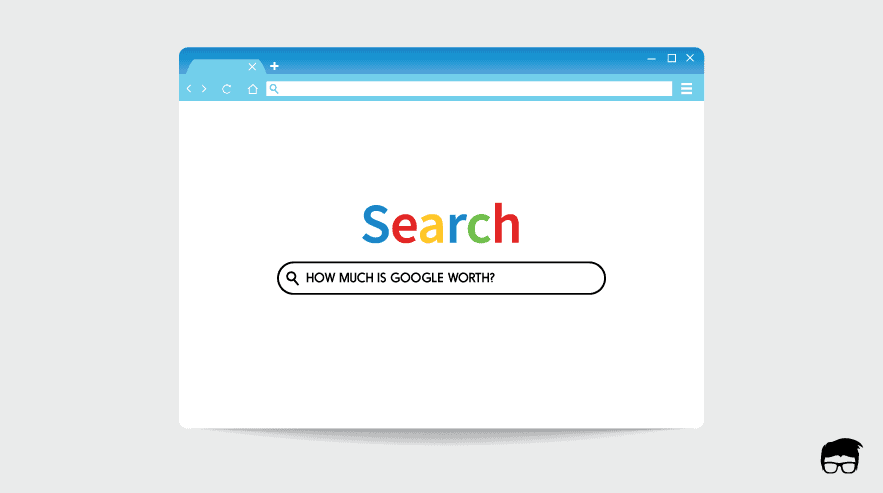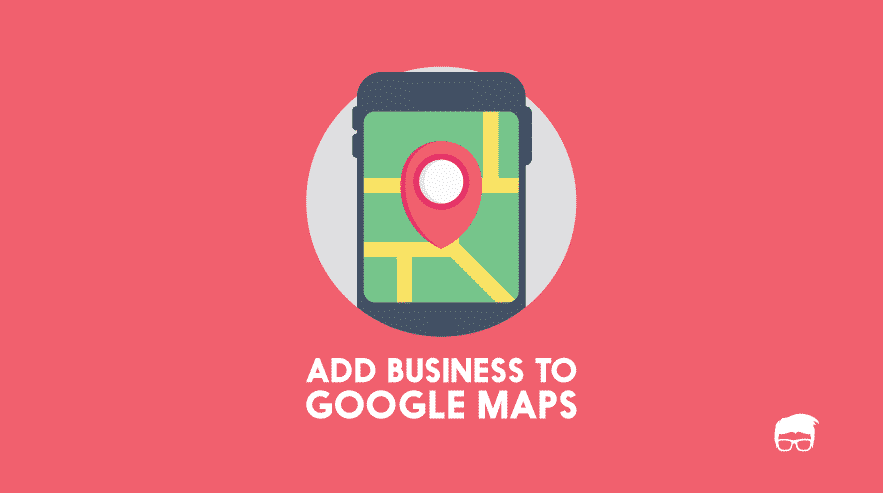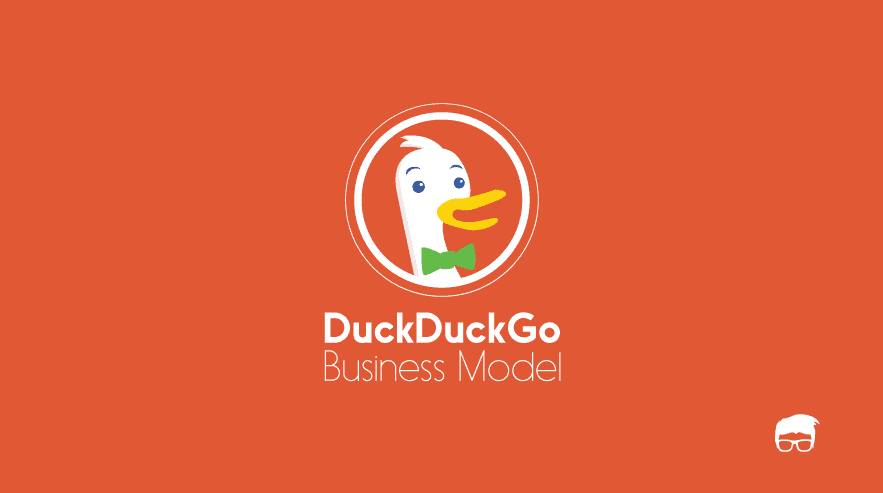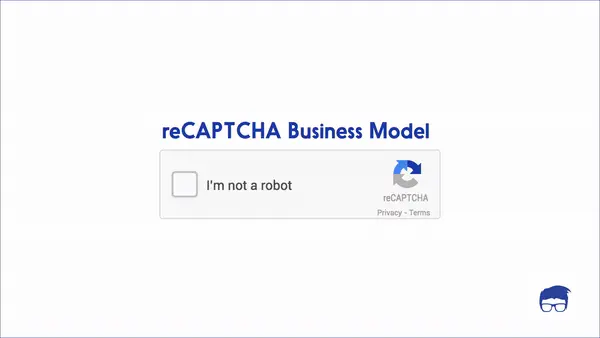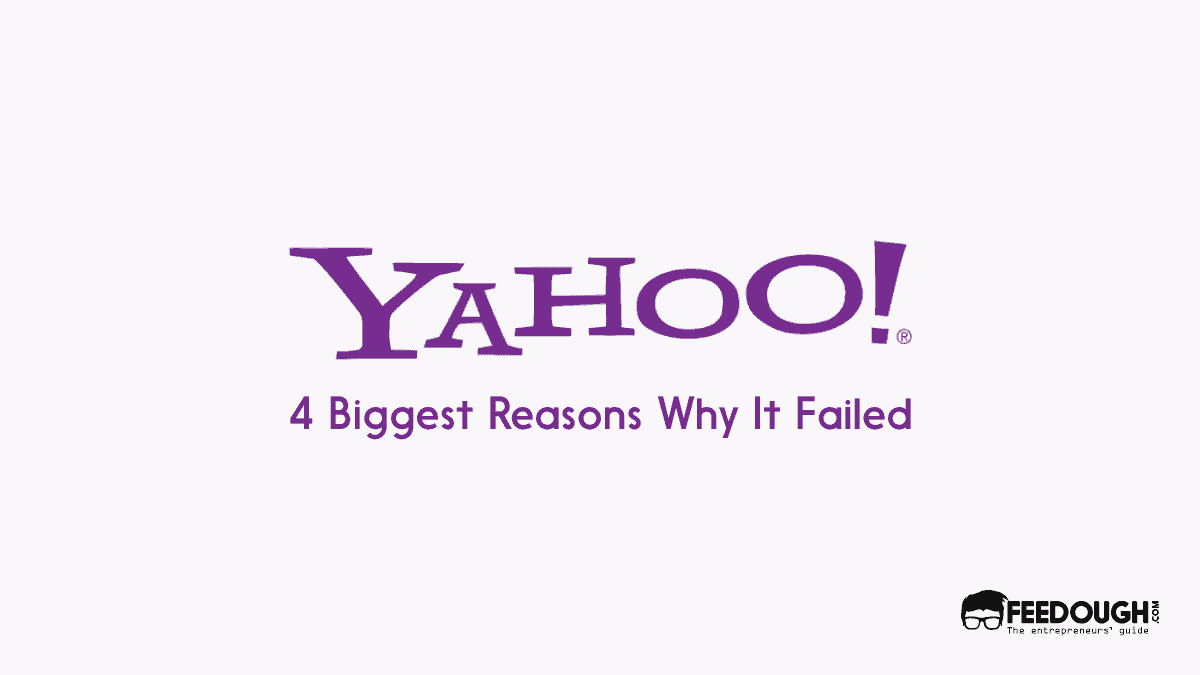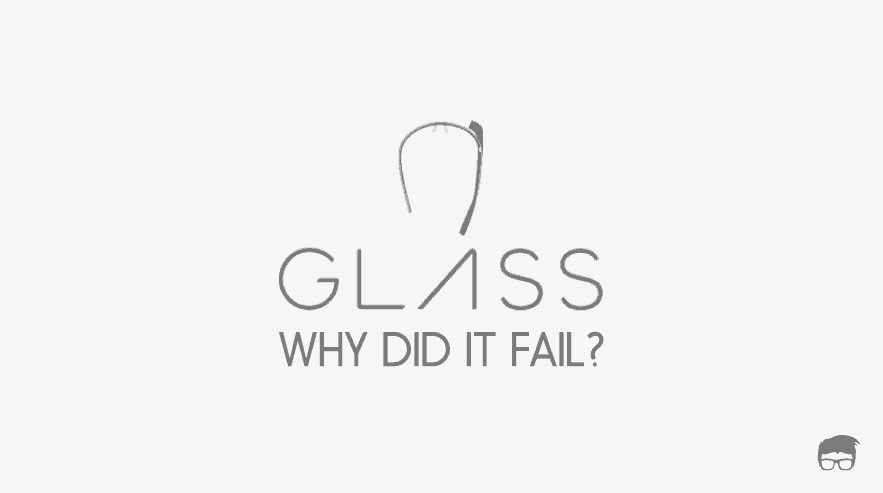Here’s an icebreaker for your next watercooler talk:
Did you know, Google was initially called “Backrub”? It was named based on its algorithm that analyzed the web’s “backlinks”.
Imagine if they’d kept the original name? “Let me BackRub that real quick.”
With it being more than 21 years since the company was launched, it’s a good time to look at the history of Google and how they went from being called “BackRub” to becoming the Internet that we usually refer to.
Who Founded Google?
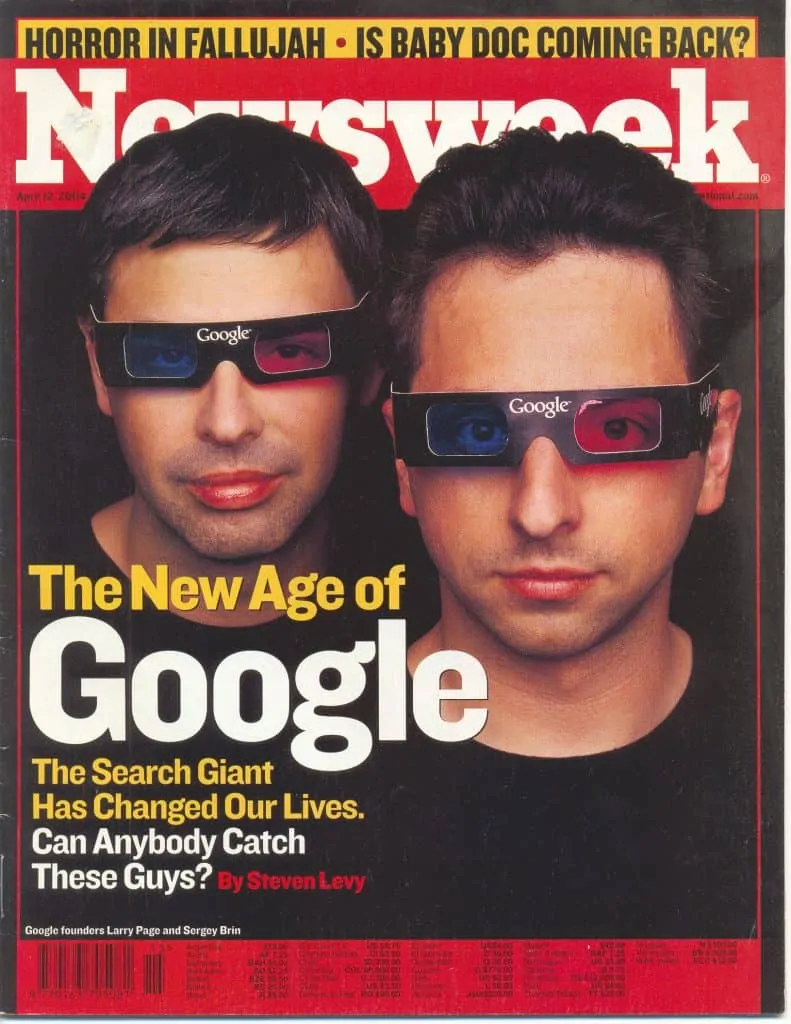
Google started as a research project by PhD students Larry Page and Sergey Brin while attending California’s Stanford University in January 1996. Both Larry Page and Sergey Brin were from academic backgrounds and knew the importance of citations on research papers.
They created PageRank based on the same notion, where one can estimate the importance of a website based on its incoming links. They created a search engine with PageRank as the backbone.
The original idea of creating a search engine, however, was a brainchild of Page, who then worked with Scott Hassan (the incidental third founder of Google) to write code for it. Events passed and Hassan left to pursue a career in robotics followed by Brin joining the team and producing the final product.
The Name – Google
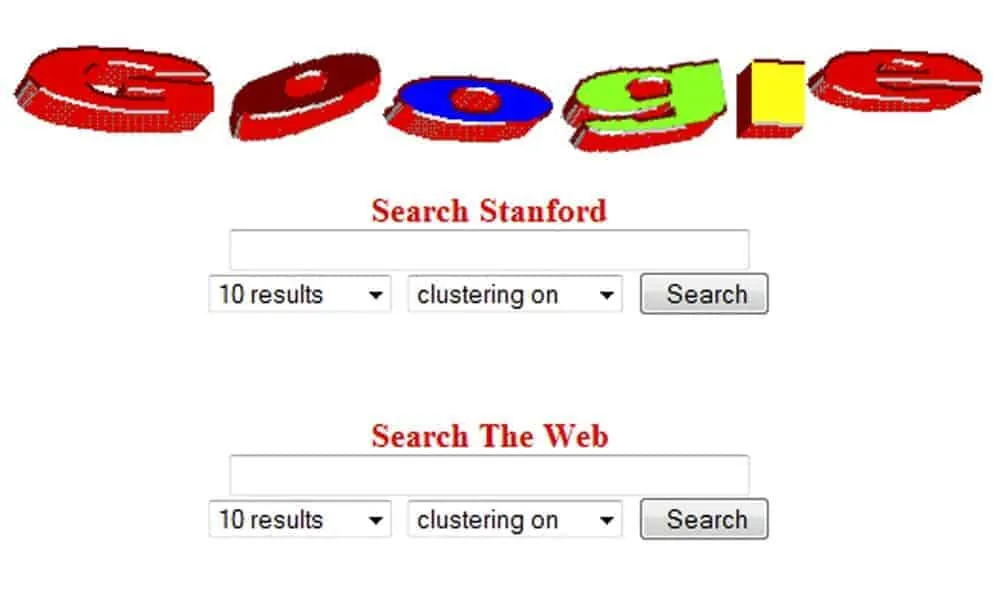
Initially nicknamed Backrub (both sure loved their wordplay), the Google.com domain name was registered on September 15th, 1997 and the company was incorporated on September 4th, 1998.
The name surely had some very positive effects on the history of Google.
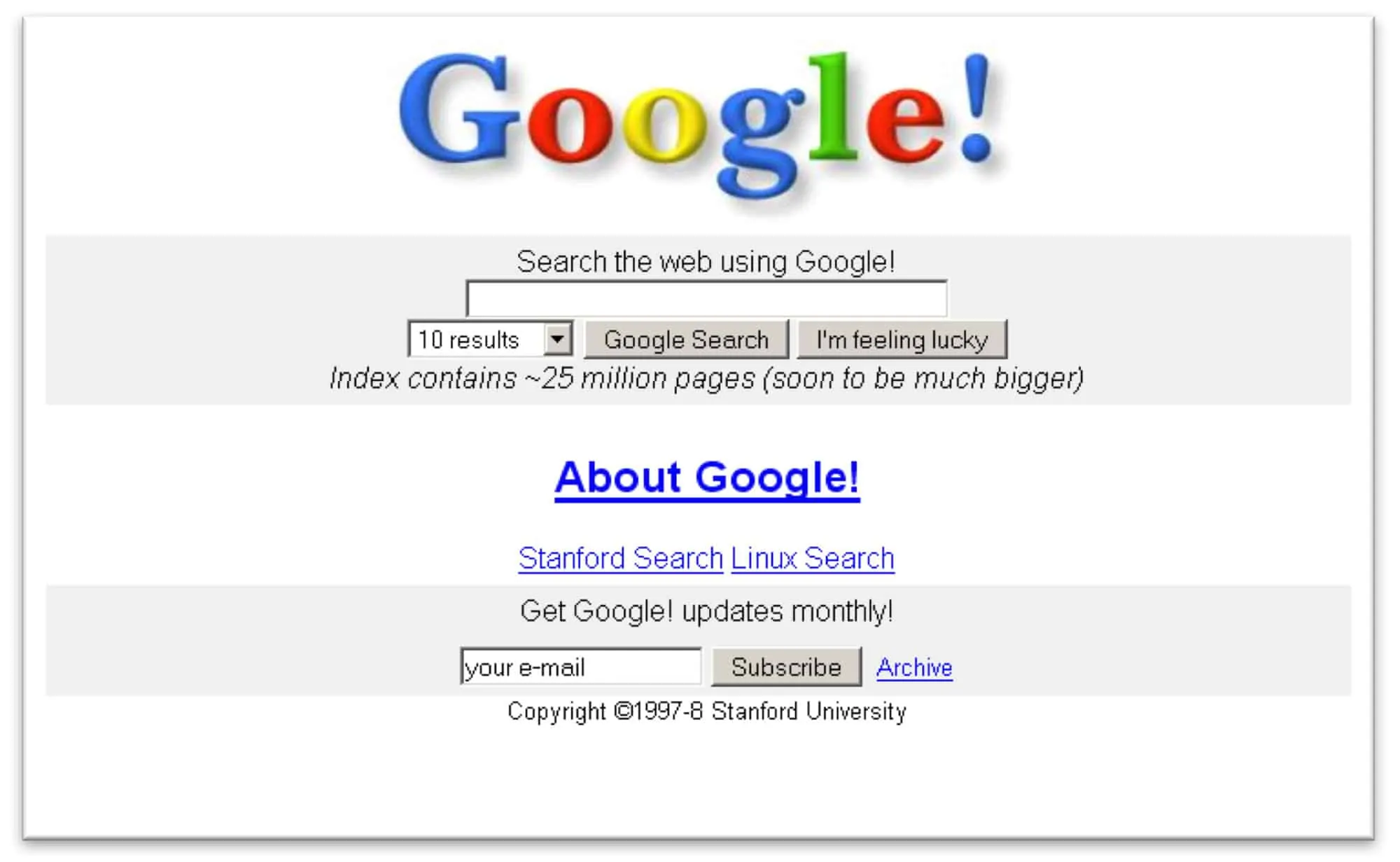
They settled on the name “Google”, from the word ‘googol’, a mathematical term for the number represented by the numeral 1 followed by 100 zeros. They chose it over “Backrub” since it sounded better and reflected their mission to organize a seemingly infinite amount of information on the web.
Failed Acquisition by Yahoo!
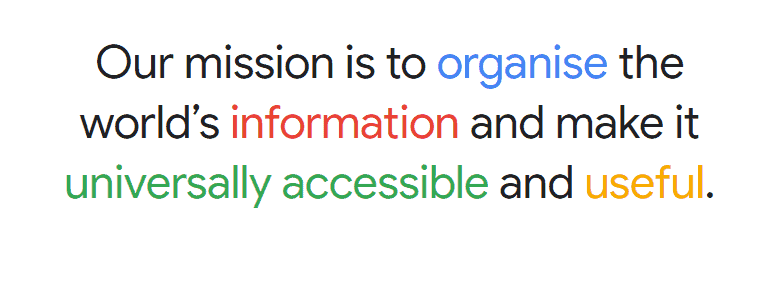
Both Page and Brin were academics at heart and in the early years tried to sell Google to pursue other interests. During all this, Google was almost sold to Yahoo!, a major player in the Internet sector back then. They tried selling their PageRank system for $1 million in 1998 to Yahoo!, but Yahoo! turned them down, stating their asking price to be quite high for such a product.
Work-From-Garage

Their offering was unlike anything that was provided by other products at the time. Soon, their site that was being hosted by Stanford’s servers got swamped from the increase in traffic and Stanford’s IT department kicked them out.
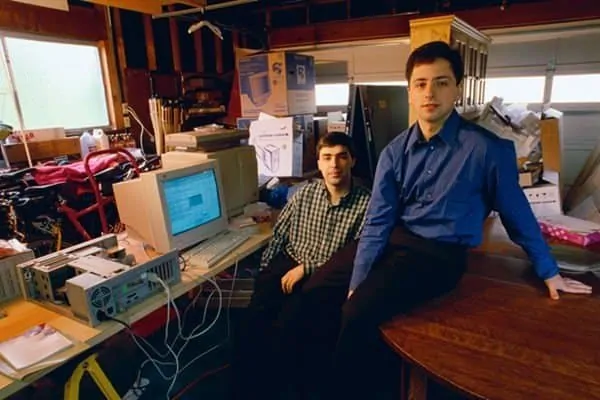
Page and Brin relocated to the garage of future Google employee and YouTube head Susan Wojcicki in 1998.
This location served as their temporary base of operations for a year.
Initial Funding
Shifting of the workplace was around the same time when they got their seed investment of $100,000 for Google Inc. from Sun Microsystems founder Andy Bechtolsheim. It was twice the amount the pair asked for. But what’s more suprising was that Google was not even incorporated at the time of receiving the cheque.
Andy had come over to listen to their pitch and liked the idea as well as the answer he got for his question: how will they make money from providing search results.
Page and Larry suggested the placement of search ads: ads that were placed in the search results that were relevant and related to whatever the user searched and they would charge for the placement of the said ads.
With the funding in hand, Google officially incorporated in their garage headquarters with Larry Page acting as the CEO on September 4, 1998, to become Google Inc.
New Digs
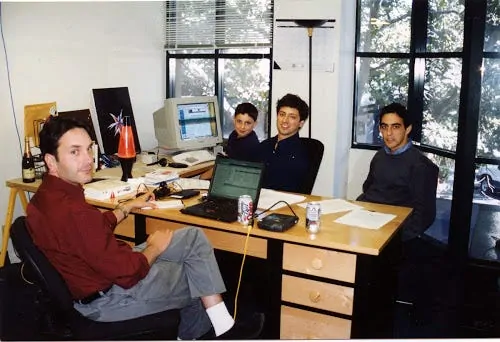
In February 1999, Google moved from its humble garage to its new base of operations at 165 University Avenue, Palo Alto with the help of the recently acquired funding. This was also the same office building that housed companies like PayPal and Logitech. Google also hired its first employee Craig Silverstein who stayed with them for more than ten years before leaving to work for Khan Academy.
The company was growing at breakneck speeds – both technologically and financially. It started hiring more employees and started investing in more hardware to spider, index and catalog the web pages and serve its users.
Google was committed to running their servers on Linux. Redhat caught their attention and the company signed them up to conduct all Internet computing functions.
It was also around this time when Google adopted its famous, but unofficial, corporate philosophy: “Don’t be evil.”
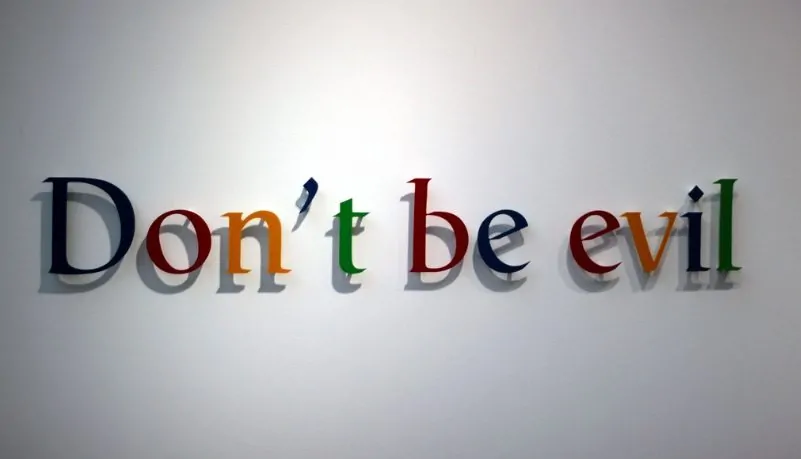
Not long after moving to Palo Alto, Google raised its first round of venture capital funding in June 1999 in the form of a $25 million investment from Sequoia Capital and Kleiner Perkins Caufield & Byers.
Launch Of The Advertising Service
In 2000, Google unveiled AdWords. It came out of a roughly month-long beta with about 350 advertisers in October 2000. AdWords was Google’s second advertising program, the first being Premium Sponsorships. Premium Sponsorships was launched months before, in August 2000 where a direct sales team sold the premium sponsorship ads to advertisers.
Google had also been developing “contextual” advertisements for a while. But they were not without competition. Applied Semantics, which had a contextual ad product called AdSense was the major player at the time.
In 2001, Google appointed Eric Schmidt as the CEO upon Sequoia Capital insisting they do so due to the rapid growth of the company. Eric Schmidt had joined Google in May as chairman of the board of directors and had previously served as chairman and CEO of Novell and CTO of Sun Microsystems.
This allowed both Larry and Sergey to pour their attention back into the technology aspect of things instead of trying to manage the company.
They also opened their first international office in Tokyo, just 3 years after being founded. In April 2003, Google bought Applied Semantics gaining the technology to strengthen its pre-existing contextual ads program.
In a turn of events, Yahoo! made Page and Brin an offer of $3 billion in 2003, but by then Page and Brin were more aware of the product that they had at hand and refused the deal.
In 2004, they moved to a newly leased headquarters with over 800 employees. This headquarters is Googleplex as we know of it today.
On April 1st, 2004, they introduced Gmail, their e-mail service. Because it was on April Fool’s Day, the users all thought it was a prank at first (Google was quite elaborate with its previous pranks; MentalPlex is a great one).

On August 19th, 2004, Google had its initial public offering on the stock market, priced at $85 per share. Today, a share in Google parent company Alphabet costs over $1,000.
Venturing Away From Search
The Google we know of today is the culmination of all the products and services that Google had either built or acquired over the years. The firm’s best and smartest acquisitions have always been the ones in areas where it had no special expertise but were still close fits with the company’s core search business.
Google follows a certain trend: If you can’t build it, buy it.
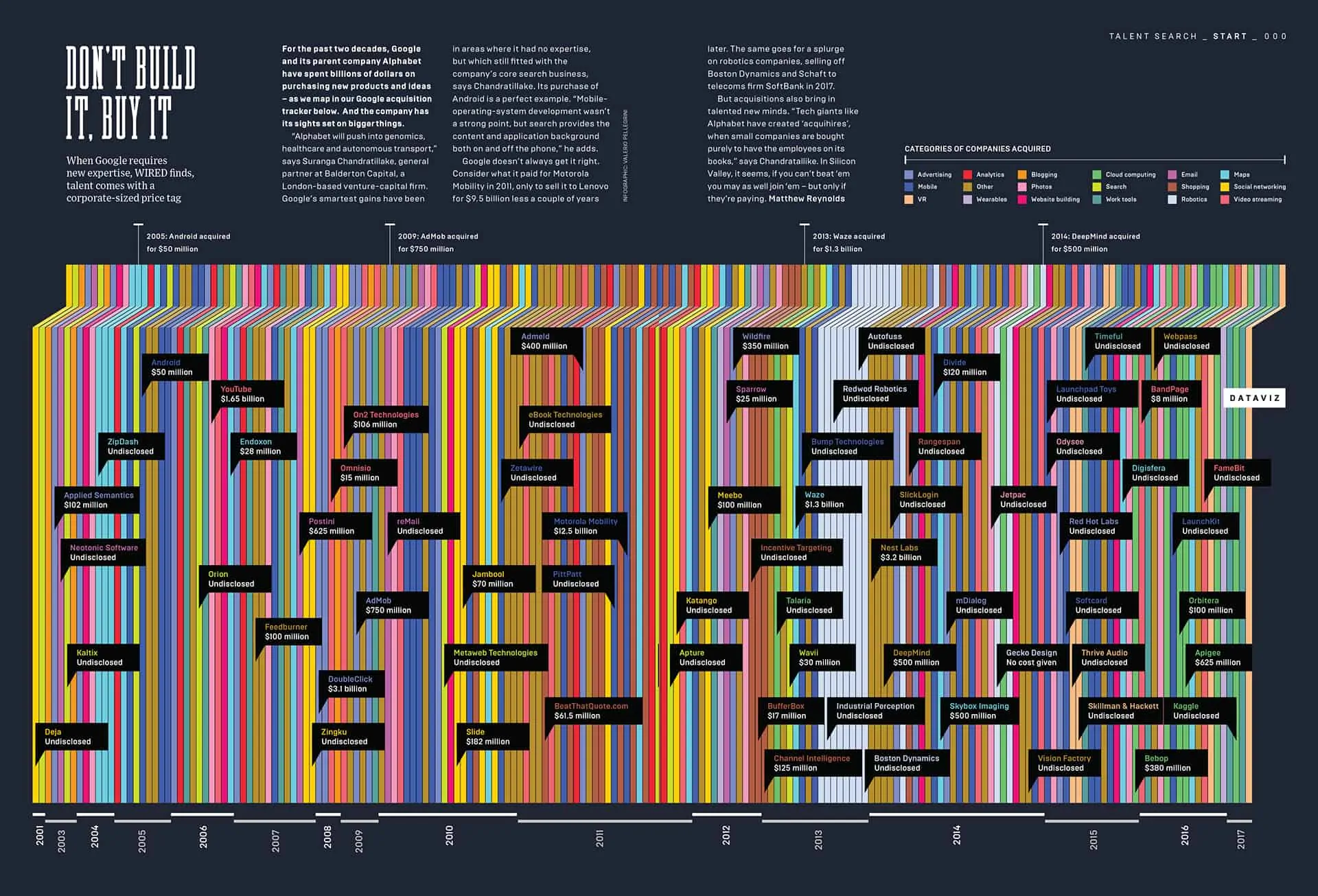
Let’s look at a few major products and service that came out of well-timed acquisitions made by Google.
Google’s Mobile Arsenal – Android

On July 11, 2005, Google quietly acquired Android Inc. for $50 million. Andy Rubin, Rich Miner, Nick Sears, and Chris White created Android in 2003, aimed to develop an OS for smart mobile devices and cameras.
Rubin and his start-ups were able to offer a new type of mobile operating system: a simple and functional open-source platform (based on the Linux kernel), equipped with tools designed to make life easier for developers. They ultimately intended it being a system free for anyone who wanted to use it. This aspect was enough to convince Larry Page and Sergey Brin to jump on this new project.
Video-Sharing & Streaming – YouTube
Google bought YouTube, the video-sharing service in 2006 for $1.65 Billion but was considered a huge risk since YouTube was full of copyrighted content that users uploaded without permission and faced potential lawsuits.
Google had made a half-hearted attempt to get into the video-sharing space with its Google Videos, but there were a few players already present. YouTube was one of them. Videos on YouTube videos were already being viewed by as many as 100 million people a day. So Google did quite a risky move of acquiring it.
The risk here was that YouTube before acquisition had users uploading copyrighted content which made it a potential lawsuit magnet. Google skillfully turned this around by negotiating contracts with content owners and introduced a reasonable takedown policy. As a result, YouTube thrived and now it earns in billions every year (Google never officially announces YouTube’s revenue).
Google’s Cloud Services – G Suite & Google Apps
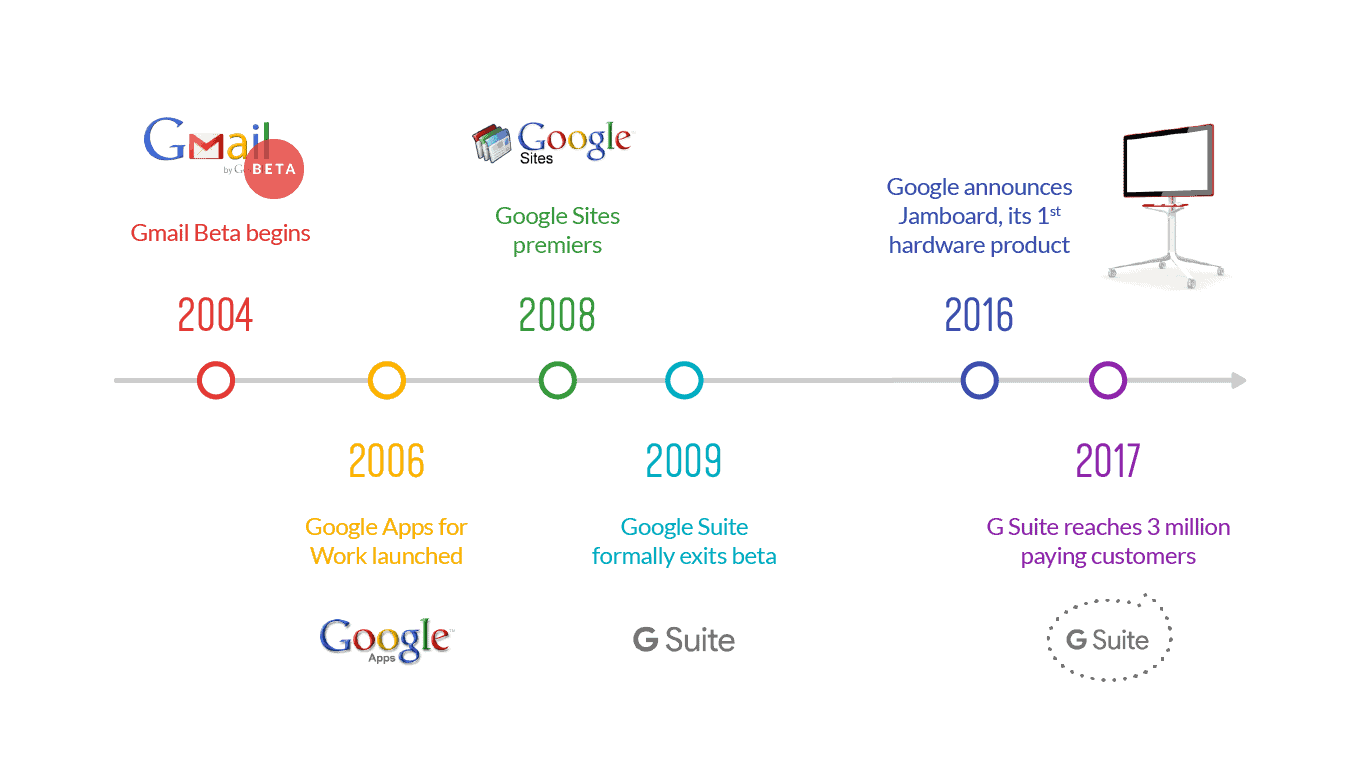
Gmail was Google’s first foray outside of search and this would eventually lead to the development of all the services and products under Google Apps and G Suite we know of today.
On July 9, 2007, Google acquired Postini, a communications security and compliance company for $625 million. Google had already been using Postini technology with Gmail and felt that it could prove to be a valuable addition to Google business model as it could help them branch out to providing other internet-based services.
By November 2010, Google consolidated its cloud offerings under new branding. Google Apps Premier Edition became Google Apps for Business, while Standard Edition became the new Google Apps.
Google Maps
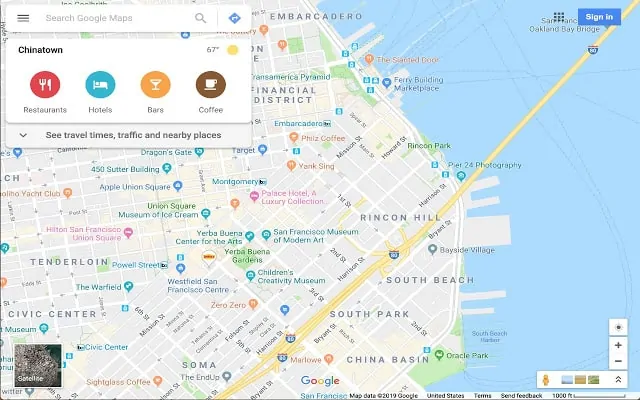
Originally started as a C++ program by two Danish brothers, Where 2 Technologies. was another disruptive company acquired by Google in 2004. Google also acquired another similar company, Keyhole, in the same month, which later on was used to create Google Earth and add features to Google Maps.
Google Maps was launched in 2005. It used satellite images which helped a lot in the aftermath of Hurricane Katrina.
The application with GPS was actually launched in 2007 as a beta version and was officially launched along with (and as a part of) Android in 2008.
The Launch Of Google Chrome
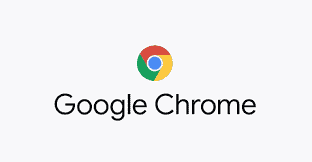
A major amount of Google costs was because of royalties it had to pay to different browsers to keep it as a default search engine. To combat this, they the founding pair hired several Mozilla Firefox developers to build a browser owned by Google. Eric Schmidt opposed the idea at first but was amazed after seeing the demonstrative product.
Google Chrome was officially launched as a beta version on September 2, 2008 for Windows XP. It was a minimalistic browser which, just like Google, disrupted the existing market and paved its way through easily.
Failure Is The Key
While Google has released over 250+ products to date, they never fail to experiment. They value failure and attribute them to Google’s success.
For every letter in the English alphabet, Google has put an end to at least one product starting with that alphabet from their lineup. As of 2019, Google has killed – 16 apps, 151 services, and 13 hardware projects in total so far.
Google prides itself on its approach towards failure, which is: to embrace and use them. They don’t just let all the money and effort invested go down the drain. They have created a process for documenting and learning from mistakes. This documenting method helps them:
- Identify the most important problems in their offering.
- Create a record on what went well and what went wrong.
- It helps reduce blame over a product or service not doing well and promotes productivity and growth.
Google’s New Parent Company – Alphabet
In 2011, Larry Page took over as the CEO of Google once more from Eric Schmidt. But both, Larry and Sergey were not content with a single company, “Google”, running all of the acquired companies and products.
So they decided to rename Google to Alphabet, creating a holding company that includes the search company Google, along with a bunch of other companies – Google Fiber, DeepMind, GV, Calico, CapitalG, X, Jigsaw, Makani, Sidewalk Labs, Verily, Waymo, Loon, and Wing.
Larry Page and Sergey Brin became the CEO and the President of Alphabet respectively. They appointed Senior Vice President Sundar Pichai as the CEO of Google.
This allowed them to pursue the development and innovation of newer technologies and services as they used to before without being burdened with running a company.
Google In 2020s
Google has almost become synonymous with “the internet”.
The term “Google” is officially recognized by the Oxford Dictionary as a verb. Almost everyone on the Internet has used either, Google’s services or products in some way or another.
These statements are no exaggeration, considering Google has over a billion people using each of its products and services.
Here are a few stats that show us just how big of a company Google is:
- Google has over 92.03% of the search engine market share worldwide as of August, 2021. (Source: StatCounter)
- Google is worth around $280 billion as of writing. (Source: Fool)
- In January 2020, Google’s parent company Alphabet became the fourth company in the world to reach a trillion dollar market capitalisation.
- Google owns about 200 companies. (Source: Investopedia)
- Chrome has a 62.41% browser market share globally as of February 2019. (Source: StatCounter)
- Google receives over 63,000 searches per second or over 3 million searches per minute on any given day. (Source: SearchEngineLand)
It also doesn’t look like they’ll stop growing anytime soon.
Go On, Tell Us What You Think!
Did we miss something? Come on! Tell us what you think about our article on the history of Google in the comments section.

Started out to become a developer but felt at home in the home of startups. The journey started from a single novel. Been an entrepreneur since schooling days. Interested in coding, reading and movies.
